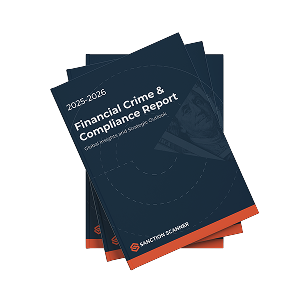What Is Cuckoo Smurfing in Money Laundering?
Cuckoo smurfing is a money laundering technique that hides illicit funds by mixing them with legitimate international transfers. So, instead of only having illicit funds in a transaction, the money is routed through small, daily transactions to avoid getting detected. Unsuspecting third parties’ transfers often get hijacked and used to hide the origin of illicit funds. These legitimate seeming transfers make it more difficult for banks and regulators to trace the crime back to the criminals. In this blog post, we’ll be giving details about the technique, what to watch out for to protect your company, and the regulations surrounding it.
How Does Cuckoo Smurfing Work?
This money laundering technique begins with a criminal looking to transfer illicit funds without being noticed by regulators or banks. Since moving the money directly can cause alerts, criminals find innocent individuals or businesses that expect a legitimate remittance. The illicit money is then used for the genuine transaction, making both the recipient and regulators think the funds are normal and lawful. Criminals use underground channels, informal value transfer systems, or hawala networks to move the dirty money to its destination. Since legitimate payments are used to hide illicit funds, the technique creates a complex web of financial crime that is harder to detect.
Let’s put all of these into an example. Let’s assume that your family is in Spain and they are sending you $9,000 to help you pay your expenses. They put this amount into a money service business (MSB) so that the money can be sent to the country you’re in, let’s say China. Criminals involved with the MSB, at this stage, put their illicit funds into the system, and they send it to your Chinese bank account.
The original money you were supposed to receive from your parents in Spain is now deposited to criminals. You get the right amount of money and criminals send the same amount of money to their own destination account successfully, but the sources are switched; you receive the illicit funds, and the innocent sum of money your parents sent gets sent to the criminal’s destination account. Your account may get frozen in the end since authorities will most likely think that you’re the one involved in the crime.
What Is the Relationship Between Cuckoo Smurfing and Cryptocurrency?
Cryptocurrency is a special interest of criminals when it comes to cuckoo smurfing since it provides an extra layer of anonymity with speedy transfers as a bonus. Since cuckoo smurfing already is used to hide money within legitimate remittances, cryptocurrencies are used for similar reasons. Criminals layer and move funds internationally with cryptocurrency without the need for traditional banking channels. Especially with privacy-focused coins like Monero or Zcash, regulators struggle to trace the true source of funds. Criminals can buy crypto using illicit cash, move those digital assets through several wallets or exchanges to then finally cash out into legitimate accounts. With this combination of theirs, criminals use both decentralization and the internationality of crypto networks.
How Is Cryptocurrency Used in Cuckoo Smurfing?
Cryptocurrency is used as the back-end settlement mechanism in cuckoo smurfing schemes and allows criminals to move illicit funds with the added anonymity. Stablecoins like USDT or cryptocurrencies like Bitcoin are used to balance these transactions rather than traditional cash mules or remittance networks. Transfers can be made between crypto wallets since they allow a more direct and trace-obscured movement of funds rather than relying on unsuspecting individuals to forward the money. Peer-to-peer (P2P) networks and non-KYC exchanges are especially frequently exploited by criminals.
Why Is Crypto-Based Cuckoo Smurfing Hard to Detect?
This type of cuckoo smurfing is more difficult to detect since digital assets provide criminals a chance of anonymity. Privacy-focused cryptocurrencies and coin mixers can hide the origin of funds, making it more difficult to trace back the flow of funds. Victims that are unaware of their wallets being used for crime are also creating an environment where it is harder to detect suspicious activity. Since these transactions made by criminals are often low-value and high-frequency, no AML alerts get raised and these transactions go undetected between normal transactions. Since these are international transactions, it complicates the detection process with each jurisdiction having varying regulations and requirements. The opaque environment these reasons create is attractive for criminals.
In 2024, law enforcement across Europe cracked down on a criminal network led by two Ukrainian brothers. The operation led to the arrest of 23 suspects, the seizure of EUR 35.7 million in cash, bank accounts and cryptocurrencies as well as 36 vehicles, real estate, watches, and jewellery. The organised criminal network of Ukrainian but also Armenian, Azerbaijani, or Kazakh nationals has been providing cash courier and underground banking services to other criminal networks. The case shows the wide range cuckoo smurfing that can involve multiple jurisdictions.
Which Crypto Types Are Commonly Used in Cuckoo Smurfing?
It is important to mention which types of crypto are used for this financial crime to better inform our readers. USDT (Tether) is known for its stability and wide acceptance, which criminals find valuable. This makes it easier for criminals to use USDT and not get affected by volatile price swings. Bitcoin (BTC) is another example because of its liquidity and ability to be transferred internationally. One other example we can give is Monero (XMR), which is chosen for full anonymity. Monero’s privacy features hide both sender and receiver addresses and creates and impossibility for tracing. Litecoin (LTC) is known for its speed and low transaction fees. It creates an environment where criminals can complete multiple small transfers quickly.
What Are the Global Regulations Against Cuckoo Smurfing?
Cuckoo smurfing is a serious money laundering risk, and regualtory bodies all around the world act accordingly. The Financial Action Task Force (FATF) puts the crime under trade-based money laundering (TBML) and alternative remittance schemes. The FATF provides guidance using Recommendation 14 and encouraging a risk based approach for monitoring remittance services. Another regulatory body concerned with cuckoo smurfing is the Financial Confuct Authority (FCA) in the UK. The regulatory body requires banks and money service businesses (MSBs) to file Suspicious Activity Reports (SARs) and verify sender identities to make sure cuckoo smurfing is stopped.
Australia’s AUSTRAC helps with typology reports that showcase cuckoo smurfing patterns and imposes fines on non-compliant MSBs. Since student remittances are widely used for cuckoo smurfing, the regulatory body also investigates these transactions to detect anomalies. One other country we’ll mention, Canada, has FINTRAC, which audits MSBs and monitors irregular deposits to find laundering schemes. The European Union pushes, through the 5th and 6th Anti-Money Laundering Directives (AMLD5/6), licensing requirements for payment service providers (PSPs) and rules that demand reporting to financial intelligence units (FIUs). FinCEN of the U.S. categorises cuckoo smurfing as a part of structuring and unlicensed MSB activity, which leads to money mule crackdowns.
In 2024, police in six countries have taken down a major underground banking network in Europe involved in laundering proceeds from drug trafficking and other serious crimes. Investigators revealed that the network used cryptocurrencies to transfer large sums of illicit funds. Nine arrests were made and €27 million in cryptocurrencies, as well as €35,000 in cash, gold, and luxury goods were seized. The case shows the importance of international cooperation between regulatory bodies to stop cuckoo smurfing.
How to Identify Cuckoo Smurfing?
You might be wondering what signs are helpful to know when trying to uncover cuckoo smurfing. The first indicator is unexpected payments. If a customer receives funds from an unknown sender which goes against their normal activity, it is a red flag. Another sign is unusual channels like transfers coming from countries or accounts that don’t match the purpose of the payment. Another way that is chosen by criminals is structured deposits. Criminals do this by breaking large sums of money into smaller transactions just below the reporting thresholds, also known as structuring.
Another warning sign for our readers is customer reports of wrong deposits. This may indicate that the account is being used by criminals. Your company should also be careful about and monitoring high-risk remittance corridors. These include international partners like UAE-UK, Pakistan-Australia, or Nigeria-EU. Weak KYC practices in these places make laundering easier; so, closer inspection is recommended to our readers. The final sign is crypto-fiat hybrid trials, which are popular nowadays. This way, fiat deposits are tied to P2P cryptocurrency wallets, which creates an environment where illicit funds can be moved without detection.
How Can Banks and FinTechs Strengthen Detection?
Banks and fintech companies need to be extra careful when it comes to implementing solutions that can detect cuckoo smurfing. Geo-risk scoring is the first recommendation from our Sanction Scanner experts. This feature makes sure that transactions are given a risk score according to their origin and destination countries. Thus, high-risk remittances can be flagged and watched closely. Sender-beneficiary matching uses the profiles and transaction history of senders and receivers to find anomalies. Another thing that can help is behavioural AI models. These models create patterns from your customers’ transactions and detects when an unusual activity occurs. Also, systems that flag narrative mismatches, where the sender states a purpose for the transaction that doesn’t make sense, help stop the moving of illicit funds.
What Is the Difference Between Smurfing, Structuring, and Cuckoo Smurfing?
Even though all three are techniques for getting through anti-money laundering (AML) solutions, smurfing, structuring, and cuckoo smurfing have their differences. Structuring consists of a single individual sending large sums of money in smaller transactions that are just below reporting thresholds to avoid getting alerted. Smurfing adds onto this technique by using multiple people or accounts, which can also be called smurfs, to make several transfers. These transfers help create a path where the origin is harder to find. Cuckoo smurfing takes it one step further by using innocent victims and moves the illicit money through them. Criminal uses a remittance, like a student receiving a tuition payment which seems innocent, to create a transfer where illicit funds are used for a seemingly legitimate transfer. Structuring and smurfing is done alone by the criminal or together with their accomplices, whereas with cuckoo smurfing an unrelated individual is exploited.
FAQ's Blog Post
Cuckoo smurfing is a money laundering technique where illicit funds are disguised as legitimate international remittances.
Cuckoo smurfing involves depositing illicit funds into the account of an unsuspecting recipient awaiting a legitimate transfer. The actual sender’s money is diverted elsewhere, while the dirty money settles the transfer locally—making the transaction appear clean and evading AML detection.
The name references the cuckoo bird, which lays its eggs in other birds’ nests. Similarly, in cuckoo smurfing, dirty money is placed into the accounts of innocent individuals, mimicking legitimate transactions.
Involvement of innocent third parties, who may unknowingly facilitate money laundering. Regulatory exposure for remittance providers and banks. Difficulty in detection, as it mimics legitimate remittance behavior.
Banks can detect cuckoo smurfing by monitoring unusual third-party deposits, checking mismatched remittance sources, using AI-based transaction monitoring, and maintaining strong KYC and due diligence practices.
Yes. Cuckoo smurfing is a form of structuring and layering used in money laundering. It is illegal in most jurisdictions and prosecutable under anti-money laundering (AML) laws.
Cuckoo smurfing has been reported in: UK (frequent cases involving student bank accounts) Australia New Zealand South East Asia Latin America




